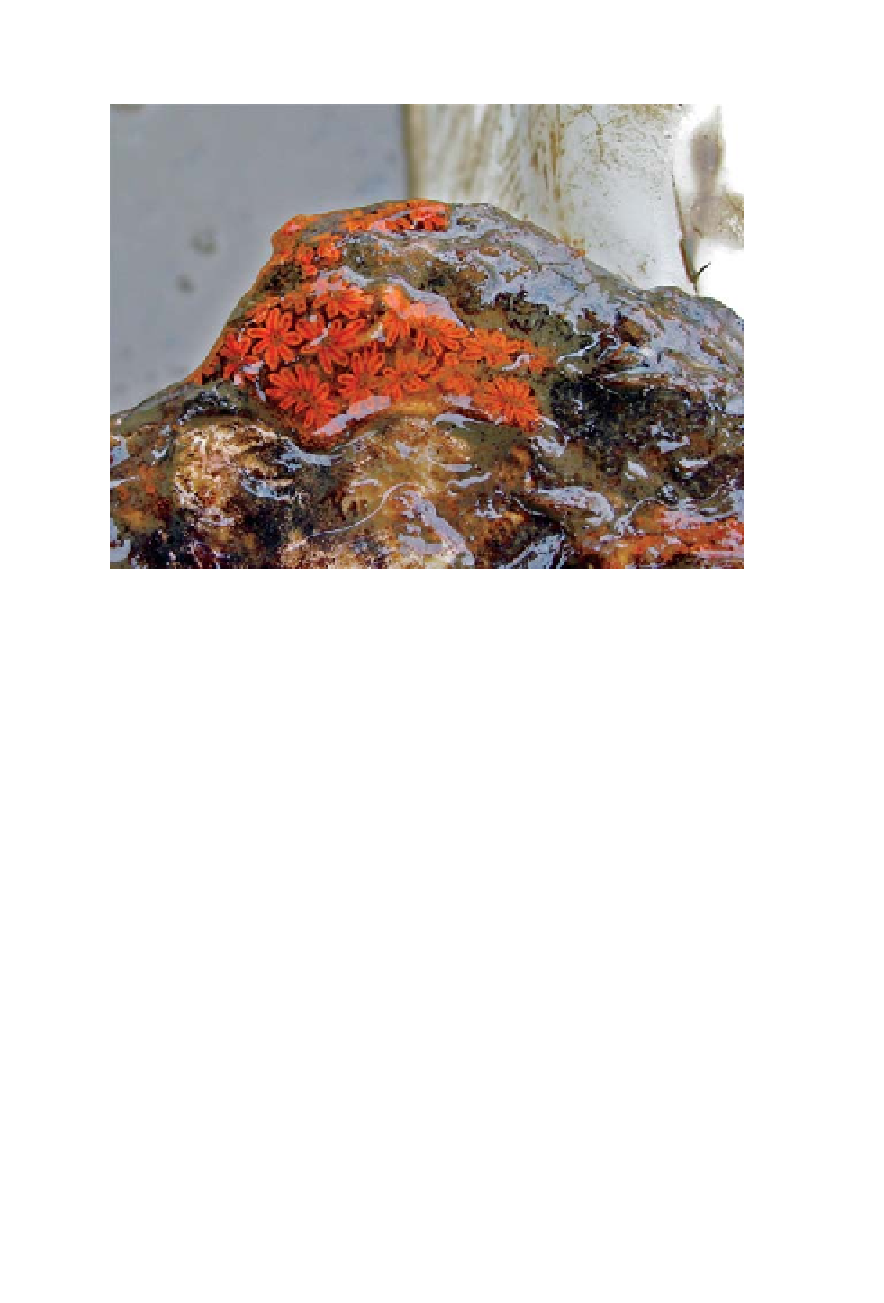Biology Reference
In-Depth Information
Non-native Golden Star Tunicates (
Botryllus schlosseri
) come in many bright colors.
Despite their primitive appearance, tunicates are most closely related to animals
with backbones. Dozens of individuals live in flat colonies surrounded by a clear
matrix, and they grow atop surfaces ranging from boat hulls to seaweed. These tu-
nicates quickly colonized a plastic PVC plate hung from a bay dock as part of a
2006-2007 native oyster recruitment study (see p. 279, “Oysters Back in the
Bay?”). (Jude Stalker)
nia bulrush (
Schoeneoplectus californicus
). Tule frequently dominates pe-
rennial brackish to freshwater marshes, often in the low tidal marsh zone.
Among the tallest local marsh plants at 5 feet to 13 feet high, tule grows in
large, dense stands. Its stems are dull olive-green and are three-sided like
other sedges; however, the angles of tule stems are so obtuse as to make the
stems seem nearly round. The inner pith consists of spongy, air-filled cells
that allow the stems to float.
Many types of wildlife rely on tule for food and housing. Waterfowl
feed on the seeds and nest within the extensive stands. Marsh Wrens at-
tach their nests, made of a loosely woven ball of grass, to its tall stems.
Many species live in the zone of overlap between fresh and marine ecosys-
tems along the coast. A surprising array of life—creatures with shells,
claws, segments, suckers, and feelers—thrives in the ooze beneath many

